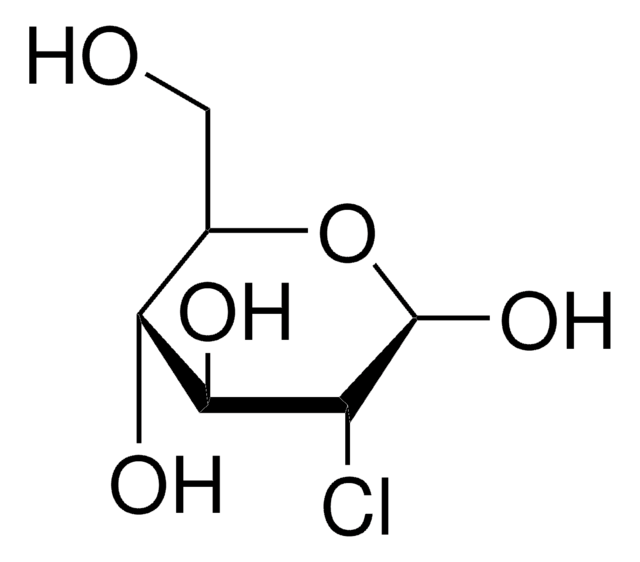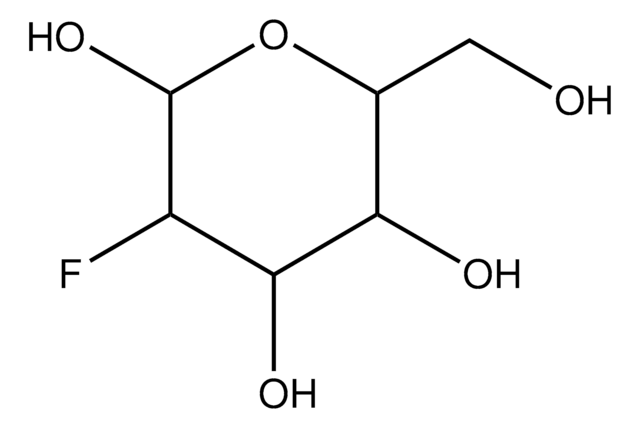F5006
2-Fluoro-2-deoxy-D-glucose
glycosylation inhibitor, glucose analog
Sinónimos:
2-Deoxy-2-fluoro-D-glucose, FDG, 2-Deoxy-2-fluoro-D-glucose
About This Item
Productos recomendados
Quality Level
storage temp.
2-8°C
SMILES string
OCC1OC(O)C(F)C(O)C1O
InChI
1S/C6H11FO5/c7-3-5(10)4(9)2(1-8)12-6(3)11/h2-6,8-11H,1H2
InChI key
ZCXUVYAZINUVJD-UHFFFAOYSA-N
¿Está buscando productos similares? Visita Guía de comparación de productos
General description
2-Fluoro-2-deoxy-D-glucose can be taken up by cells but does not undergo metabolic glycolysis.
Application
Biochem/physiol Actions
signalword
Warning
hcodes
Hazard Classifications
Eye Irrit. 2 - Skin Irrit. 2 - STOT SE 3
target_organs
Respiratory system
Storage Class
11 - Combustible Solids
wgk_germany
WGK 3
flash_point_f
Not applicable
flash_point_c
Not applicable
ppe
dust mask type N95 (US), Eyeshields, Gloves
Certificados de análisis (COA)
Busque Certificados de análisis (COA) introduciendo el número de lote del producto. Los números de lote se encuentran en la etiqueta del producto después de las palabras «Lot» o «Batch»
¿Ya tiene este producto?
Encuentre la documentación para los productos que ha comprado recientemente en la Biblioteca de documentos.
Los clientes también vieron
Contenido relacionado
Labeled isotopes used as target materials in imaging have provided insights into the various mechanisms of human physiology and have lead to treatments for diseases. Water-18O is used for the production of 18F radionuclides, such as 18FDG (Fluoro-deoxyglucose). 18FDG used in PET and with other imaging technologies, such as CT/SPECT, has led to the diagnosis and treatment of a wide range of diseases, including lung, liver, and brain tumors, epilepsy, and Alzheimer’s.
Nuestro equipo de científicos tiene experiencia en todas las áreas de investigación: Ciencias de la vida, Ciencia de los materiales, Síntesis química, Cromatografía, Analítica y muchas otras.
Póngase en contacto con el Servicio técnico







